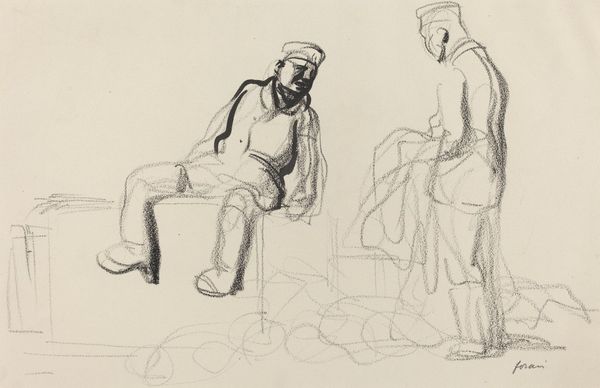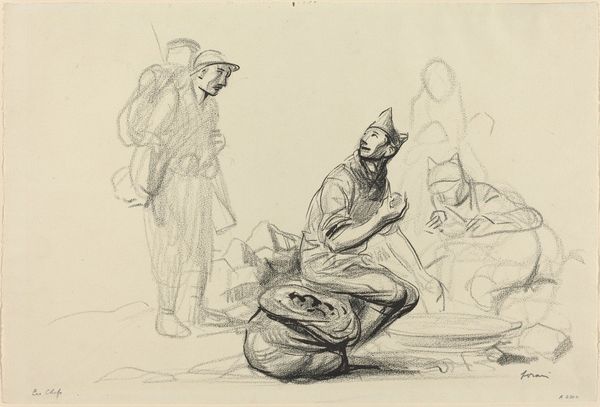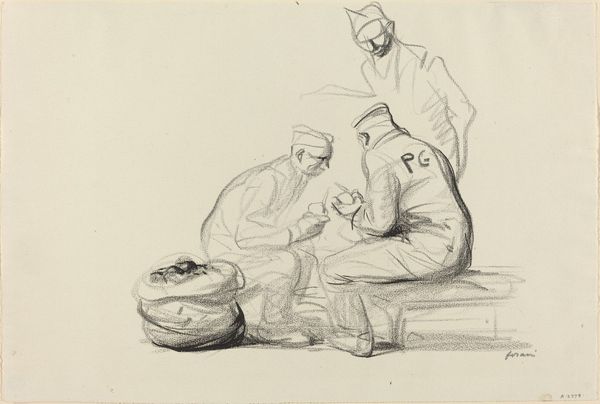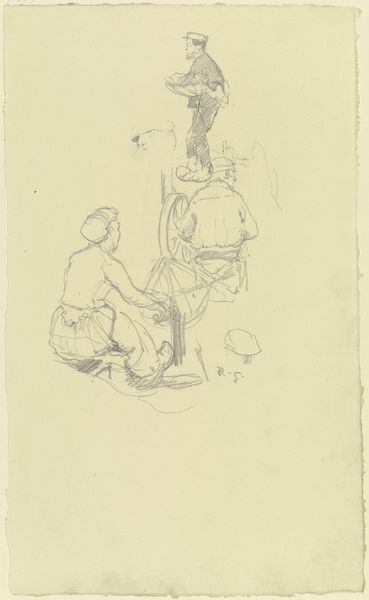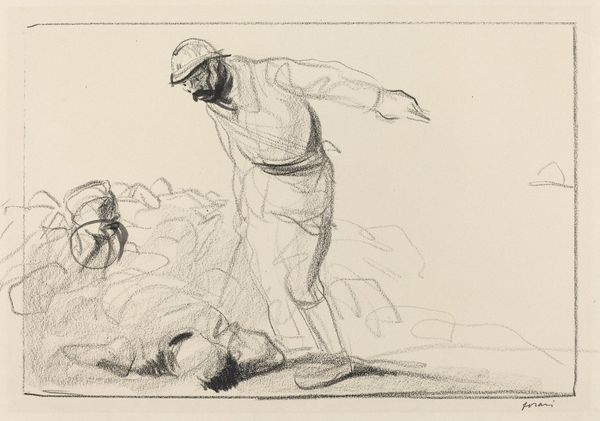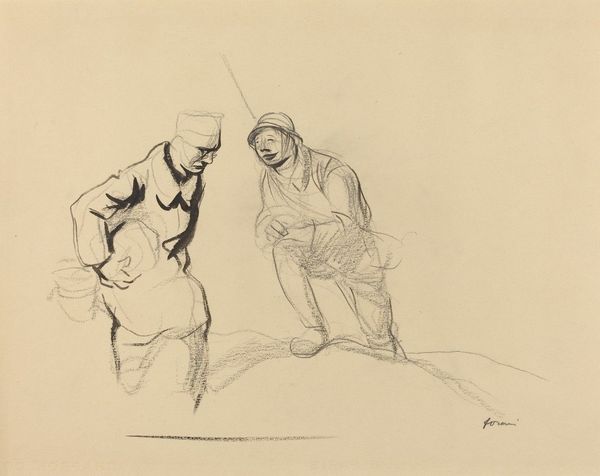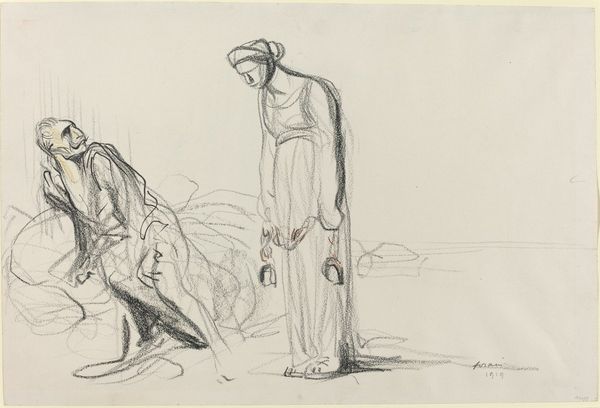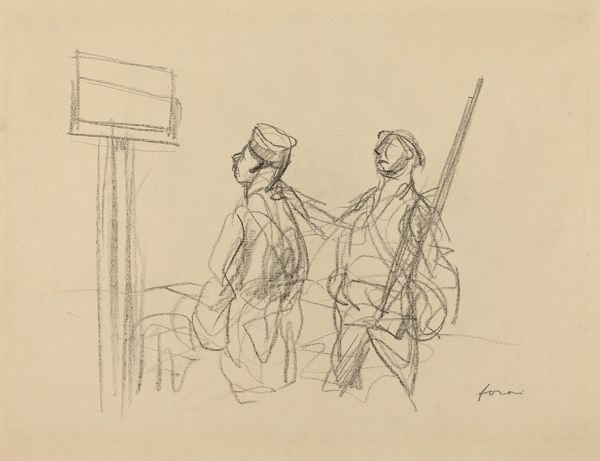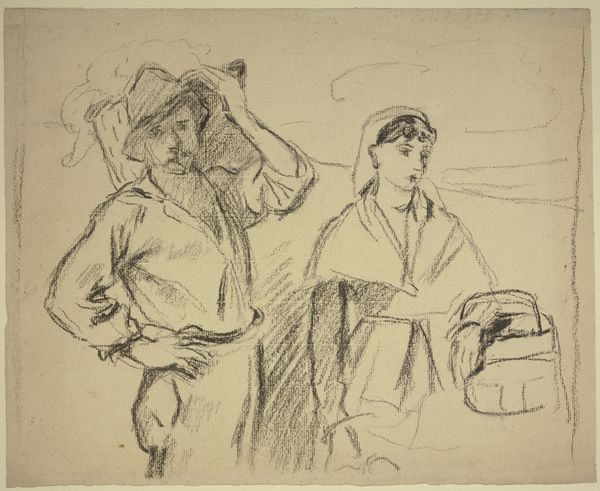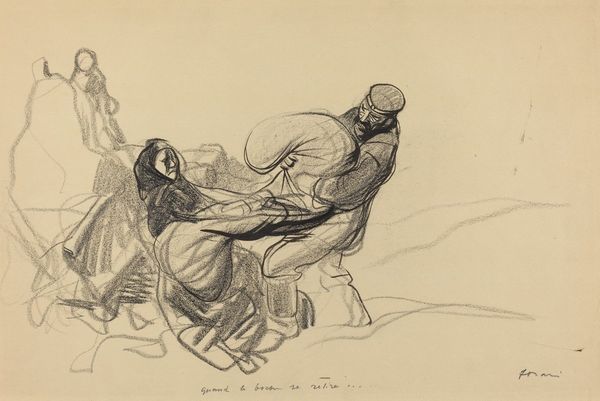
drawing, pencil
#
portrait
#
drawing
#
pencil
#
genre-painting
Copyright: Public Domain: Artvee
Curator: Looking at "Soldiers Preparing a Meal" by Jean-Louis Forain, likely created between 1914 and 1919, one can't help but notice the stark realism conveyed through a simple pencil drawing. It's a genre painting, offering a slice of life from the Great War. Editor: What strikes me is the utter fatigue in those figures, rendered with such delicate lines. The sketchiness, almost unfinished, adds to that sense of transience, of a moment snatched from the jaws of something enormous and awful. It's like seeing ghosts preparing supper. Curator: Precisely. Forain was deeply affected by World War I, and much of his later work, like this, directly engages with the human cost of the conflict. Notice the stark contrast in postures—the standing soldier seemingly watches over the others, their bodies communicating both weariness and quiet cooperation in a shared task. It's about capturing humanity amid mechanised horror. Editor: I am intrigued by how Forain hints at depth and texture using just pencil strokes, look how he renders the soldiers uniforms with just basic lines! The expressions are so evocative. One stares upwards as if anticipating something–a bombing?– while another prepares food. What a strangely intimate depiction of an ordinary task punctuated by dread. Curator: And context, of course, deepens our appreciation. Forain was working during a time when artistic styles were radically changing in response to technology and society's own evolution with industrialised warfare. So this pencil drawing becomes almost an act of preservation, of visually archiving humanity in crisis. Editor: Absolutely. It also feels like an observation, a quick capturing of lived reality by the artist. The fragility of the drawing embodies the fragility of existence for these soldiers. I also like how it leaves you feeling as if something huge is looming just outside of frame; one hears sounds just at the very periphery of what is represented visually. Curator: Reflecting upon Forain's "Soldiers Preparing a Meal," it's fascinating how such an unadorned medium could convey such complexity in the human experience during times of conflict, reminding us of the era's broader socio-political narrative. Editor: Agreed. The magic is in what it whispers: the terror, tedium and the shared human threads amid utter inhumanity, all rendered by the simplest of tools.
Comments
No comments
Be the first to comment and join the conversation on the ultimate creative platform.

